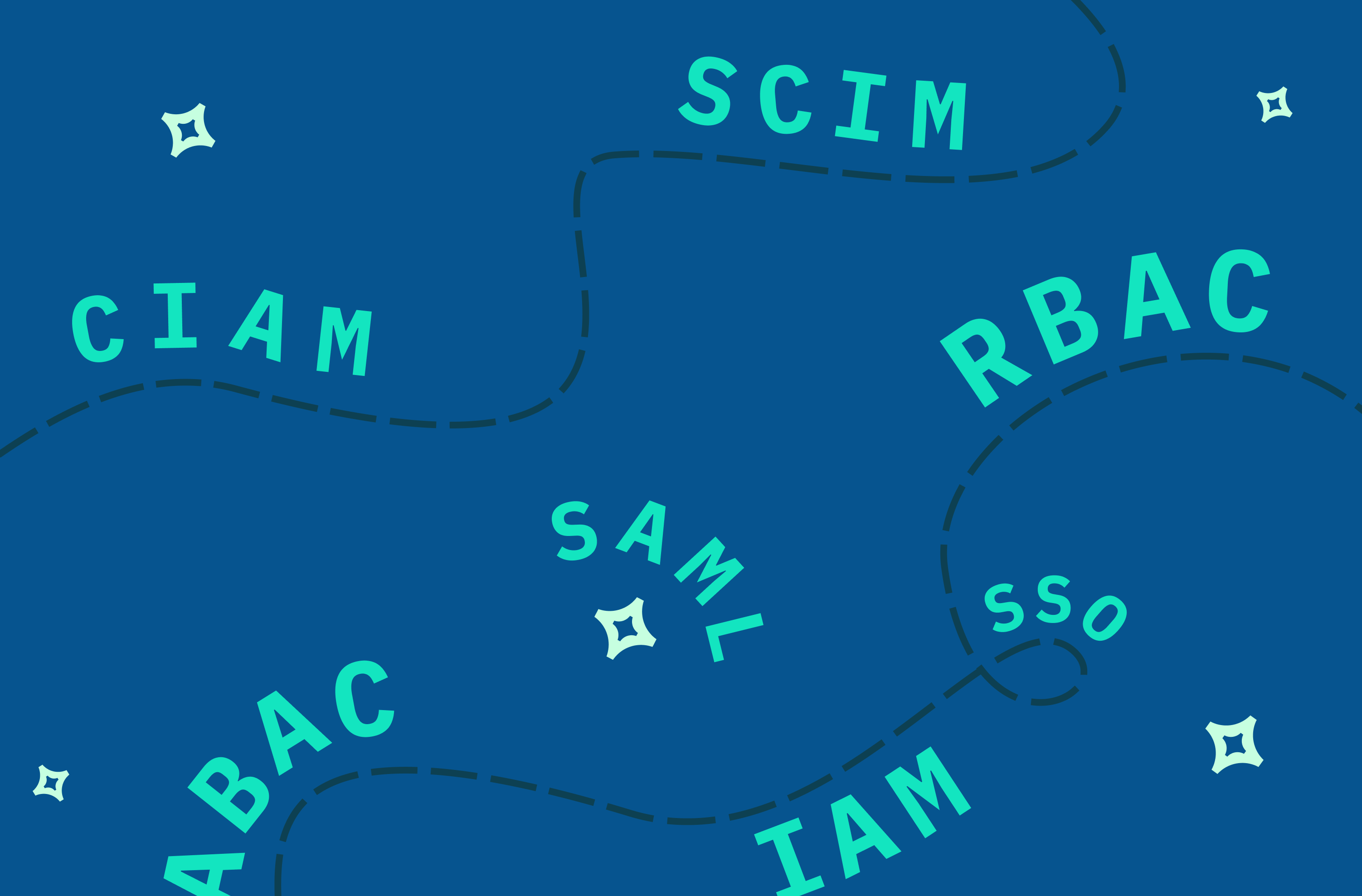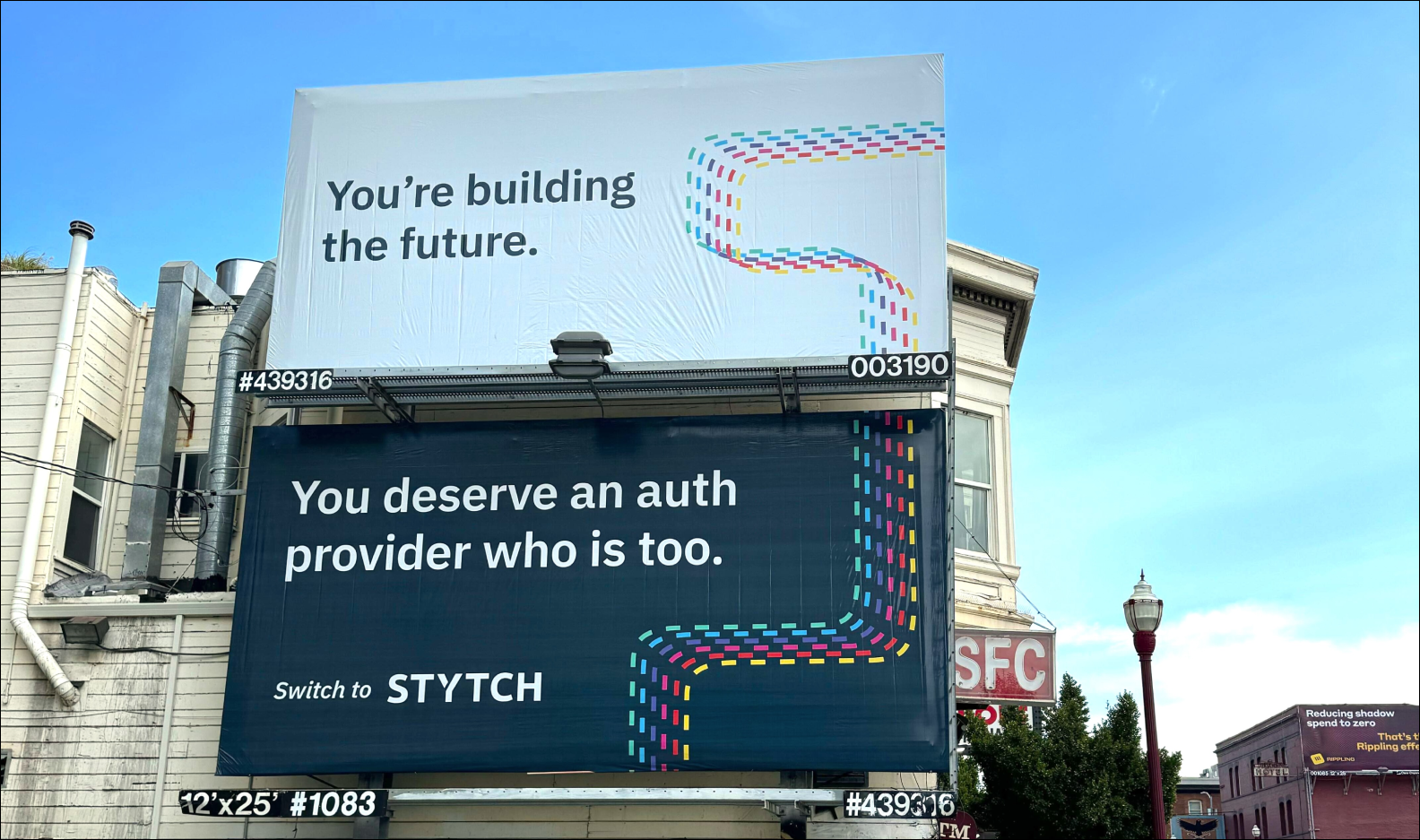Back to blog
What is SaaS integration and why should developers consider it?
Auth & identity
Feb 13, 2024
Author: Alex Lawrence
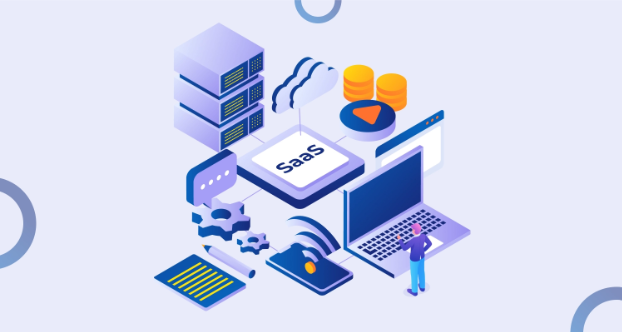
In an era where agility and operational efficiency are paramount, Software as a Service (SaaS) has become an unparalleled driver of innovation and transformation for many organizations. Central to this evolution is SaaS integration, a critical aspect that streamlines application interactions, data sharing, and processes.
This article delves into the capabilities, use cases and challenges of SaaS integration and what to look for in SaaS providers when building your own business or applications – especially for complex B2B and SaaS-centric projects leveraging many different SaaS solutions at scale.
SaaS applications: tools of many trades
SaaS applications have witnessed exponential adoption driven by their scalability, cost-effectiveness, and user-centric design. Today, almost every modern business or developer team in any industry engages with a wide spectrum of SaaS solutions, such as tools that enhance customer engagement like advanced Customer Relationship Management (CRM) systems, Enterprise Resource Planning (ERP) solutions, and developer productivity-focused apps like Jira, Github, Datadog or Sentry. Security and authentication solutions like Stytch also provide scalable, low-lift options for many different use cases.
These applications have become the cornerstone of growth and productivity in the digital age, enabling businesses to navigate market dynamics, scale operations efficiently, and elevate service delivery without significant capital investment in engineering.
When to consider a SaaS service
So when should a developer or business consider using SaaS services for their apps? A great example is for the deployment of Customer Identity Access Management (CIAM). A SaaS Customer Identity Access Management (CIAM) service provides businesses with crucial up-to-date security and functionality without extensive in-house maintenance or technical expertise. Closed-source SaaS CIAM solutions, maintained by dedicated developer teams, ensure your system regularly receives critical updates and feature enhancements, alleviating the burden on your engineering and IT staff and keeping your security measures robust.
Moreover, as your business grows, the scalability and support offered by a SaaS CIAM become invaluable. These solutions automatically adjust to your expanding needs while providing comprehensive customer support to swiftly address any issues. This combination of flexibility and expert assistance makes a SaaS CIAM a no-brainer budget item for many businesses and developer teams.
Aside: Stytch stands out in the CIAM space with its innovative and adaptable strategies, offering users a frictionless experience through passwordless access and multi-device two-factor authentication. By prioritizing ease of access alongside proven security measures, Stytch could be your ideal partner in SaaS integration for CIAM. Learn more.
Core benefits of SaaS integration
Simple SaaS integration refers to the process of connecting different applications and services together to create a unified ecosystem, improving efficiency, productivity, and ultimately, creating better customer experiences.
A SaaS app integration strategy serves as the linchpin in this process, providing the necessary frameworks to bridge several applications, thereby amplifying the benefits of SaaS integration.
API Integrations
API integration is the cornerstone of effective SaaS connectivity, enabling disparate applications to communicate, share data, and function in unison. Through well-defined Application Programming Interfaces (APIs), enterprises can establish secure, reliable, and efficient data exchanges between SaaS applications regardless of the individual software architectures.
An API-centric approach to integration is fundamental in creating a connected enterprise ecosystem where business apps sharing data can drive enhanced operational efficiency and agility.
Despite the ease with which APIs can help SaaS solutions integrate and interact with one another, various complexities often thwart (or substantially slow down) the most ambitious integration roadmaps.
Overcoming integration challenges
To tackle the technical complexities of SaaS integration, businesses must navigate certain challenges inherent in their organization. The payoff is well worth it for many organizations seeking to unleash the full potential of their growing SaaS ecosystem.
Data security and compliance
As businesses integrate SaaS applications to share data and streamline workflows, ensuring the security and compliance of cloud data becomes paramount. This involves navigating the complexities of cloud service agreements with SaaS vendors, understanding the terms of SaaS integration, and ensuring that data transfer protocols meet stringent security standards.
Additionally, with the increasing focus on data privacy regulations such as GDPR and CCPA, businesses must also ensure that their SaaS integrations comply with these regulations to avoid costly fines and reputational damage.
To address these concerns, many organizations are turning to specialist SaaS integration tools that offer advanced security features such as encryption and access control, as well as compliance monitoring and reporting capabilities.
High-friction, tedious authentication methods have long dominated the B2B security landscape. Stytch’s GDPR-compliant B2B SaaS auth platform doesn’t sacrifice usability for security, making it easy to build enterprise features like SSO and MFA in minutes rather than months. With Stytch, you could save resources and convert more prospects. Learn more.
Technical compatibility and integration complexity
One of the foremost challenges in SaaS integrations is ensuring technical compatibility across diverse platforms. SaaS integration of applications like CRM systems, ERP solutions, and business intelligence tools with existing internal systems often involves complex technical work that, given the size and global distribution of an organization, can be a deterrent.
In the average enterprise organization, many SaaS apps and legacy systems must coexist and share data freely, necessitating sophisticated SaaS integration flows and custom integration solutions or a bespoke integration platform. Tying them all together is no easy feat, often requiring a meticulous process of untethering old solutions while introducing new information management processes to scores of employees across siloed departments.
Data silos and manual data entry
It’s clear to many modern organizations that data and department silos obstruct the free flow of information across the business ecosystem where integration is key to grow, scale, and thrive. These silos not only impede business operations but also lead to increased manual data entry, a time-consuming process prone to human error.
Effective SaaS integrations aim to break down these silos, enabling business apps to share data seamlessly and automate processes while mitigating human error. In the future, an interconnected system will be even more crucial as AI algorithms take the reins on routing data across departments with greater efficiency than ever before,
What to look for in SaaS companies
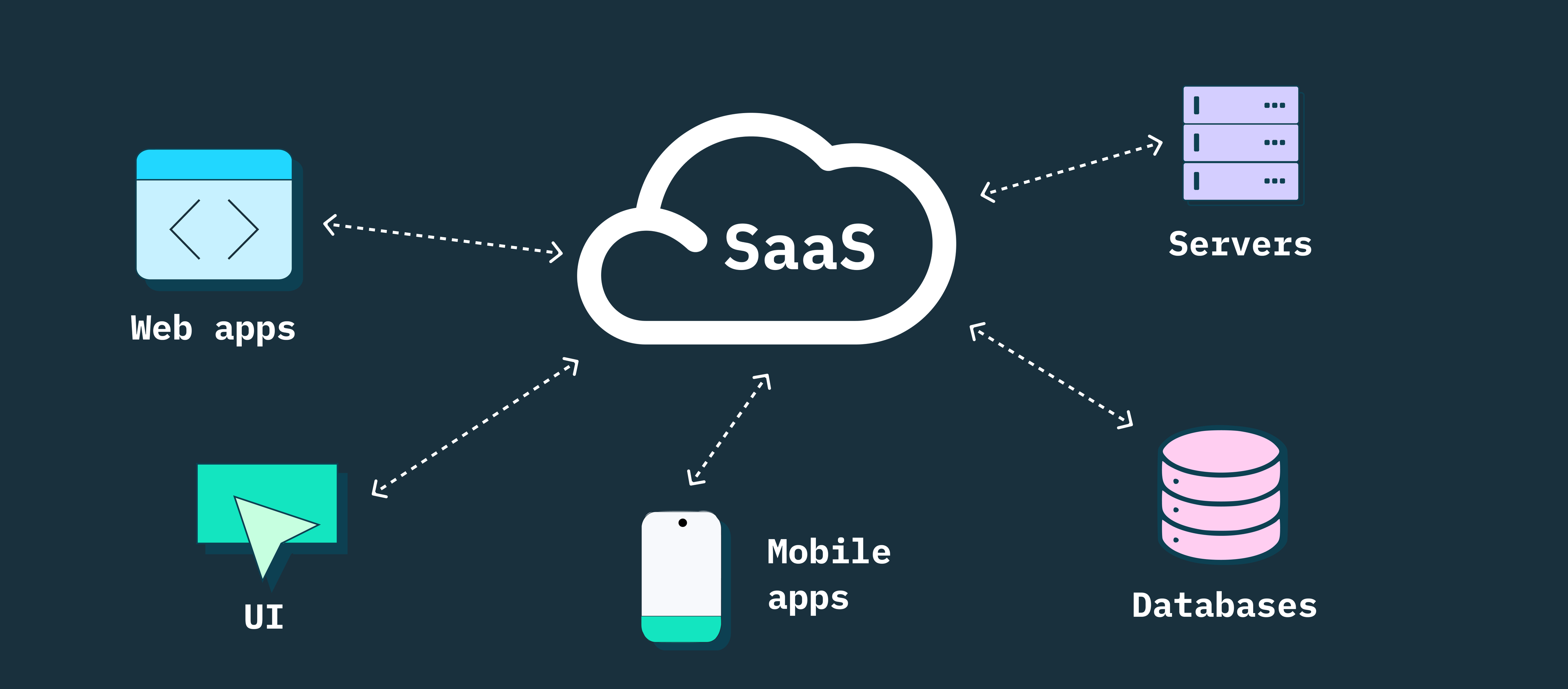
While integrating with SaaS providers can be an organizational challenge, the right approach can also be transformative. Here are a few crucial things to consider when assessing SaaS solutions.
Robust API integration platform capabilities
A SaaS provider that offers robust API integration capabilities can significantly accelerate integration development. APIs are the connective tissue that enable different software systems to communicate, facilitating seamless data flows between SaaS platforms and internal systems. These capabilities ensure that data is synchronized in real time, reducing the risk of outdated or conflicting information.
Businesses should look for SaaS solutions that offer the flexibility for both custom and native SaaS integration. Custom integration allows businesses to tailor the integration according to their unique workflows and business processes, while native integrations provide out-of-the-box connectivity with popular business tools, reducing the technical work involved. A combination of both options provides the best of both worlds, ensuring maximum flexibility and efficiency in data sharing. Don’t short sell yourself on anything less.
Scalability and cloud-based services
The ideal SaaS integration solution should be scalable, capable of growing with the business. Cloud-based services offer this scalability, allowing businesses to adjust their usage based on current needs without significant upfront investment in physical infrastructure. This also allows for easier and quicker deployment of new integrations as the business expands or changes. Additionally, cloud-based services often offer higher levels of reliability and uptime compared to on-premise solutions.
Data mapping and transformation
Another crucial aspect of data integration is data mapping and transformation. The ideal SaaS solution should have robust data mapping capabilities that allow for easy translation between different formats and systems, such as converting data types, aggregating information, and filtering datasets to meet the specific requirements of different systems and applications. It should also provide options for data transformation, allowing businesses to manipulate data before it is integrated into the target system. This level of data manipulation ensures that the information being shared between systems is accurate and consistent.
Effective data mapping tools should facilitate seamless communication between disparate software, eliminating the potential for data silos and ensuring that all systems are operating with the current and correct data.
Customizable integration flows
A SaaS solution should offer the versatility to accommodate various types of integrations and support different application architectures, such as backend systems, frontend interfaces, mobile platforms, and various web frameworks. This flexibility enables businesses to tailor their integration strategies to their specific needs, streamlining the connectivity between SaaS applications and internal systems, and thus enhancing the cohesion within the enterprise.
SaaS apps and solutions that provide a comprehensive library of pre-configured integration templates for widely-used applications significantly simplify the integration process. This approach not only reduces the initial setup time and complexity but also facilitates ongoing management and seamless updates in line with the latest application releases, ensuring that integrations remain robust and effective over time.
Authentication and identity management in SaaS application integration
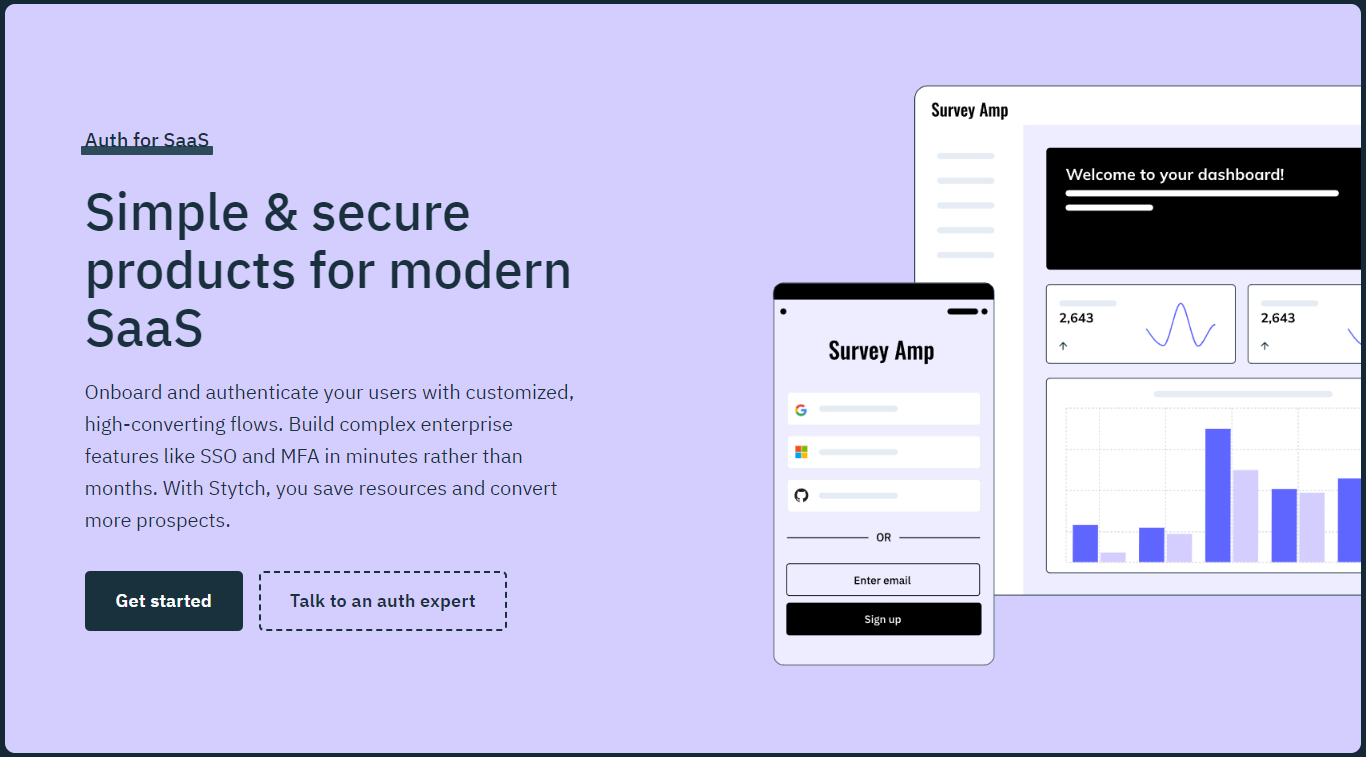
The role of authentication and identity management systems in these highly complex digital ecosystems cannot be understated. There is a steadfast and growing need for secure, seamless connectivity, and a key aspect of successful SaaS integration is ensuring that authentication processes are both efficient and impenetrable.
Stytch’s SaaS authentication solutions
Stytch offers tailored SaaS authentication solutions that streamline the user onboarding process and help bolster conversion rates. You can quickly implement sophisticated features such as Single Sign-On (SSO) and Multi-Factor Authentication (MFA), transforming a months-long project into a task that can be completed in minutes. Our API and SDKs help conserve valuable resources while optimizing your user experience, leading to higher conversion rates and a more secure authentication framework.
Stytch’s fraud prevention solutions
Stytch also offers fraud prevention tools that form a powerful additional layer of security against fraud, provisioning scalable, secure access to systems within enterprises and businesses of all sizes.
Stytch’s Device Fingerprinting (DFP) can protect against automated attacks by aggregating various attributes of a user’s device into a unique identifier, ensuring a high degree of accuracy in distinguishing legitimate users from fraudulent actors. The use of attributes like browser type, screen size, operating system, and timezone, combined into a single identifier, provides a unique ‘fingerprint’ for each device, effectively detecting and blocking bad bot traffic.
A step beyond traditional CAPTCHA, Stytch’s Strong CAPTCHA uses complex challenges that are easy for humans but difficult for bots to solve, effectively distinguishing between legitimate users and automated systems.
Through working with Stytch, businesses can significantly improve their authentication processes, leading to a more securely connected, efficient, and harmonious SaaS environment that fuels an exceptional customer experience for their end users.
To learn more about how these or other solutions work, reach out to an auth expert to start a conversation.
Build auth with Stytch
Pricing that scales with you • No feature gating • All of the auth solutions you need plus fraud & risk
Authentication & Authorization
Fraud & Risk Prevention
© 2025 Stytch. All rights reserved.
